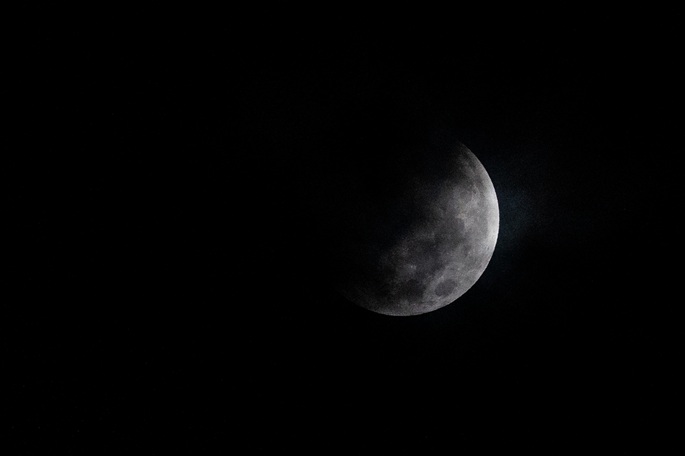Despite clouds, some see partial eclipse in parts of Europe
Published : 29 Mar 2025, 21:10
A partial solar eclipse was visible in some parts of Europe, including Germany, on Saturday, though clouds meant some were unable to see up to one-fifth of the Sun obscured by the Moon.
The eclipse reached its peak at around 12:15 pm (1115 GMT), and lasted a further 50 minutes.
In Germany, those in west and north-west had the best view, according to Carolin Liefke from the House of Astronomy in Heidelberg. Cloud cover was heavier in the south and south-east, as was forecast.
Viewing conditions were best in a strip from Schleswig-Holstein to Saarland. In other areas such as the furthest east parts of Germany, viewers could at least see the spectacle through gaps in the clouds, Liefke said.
Earlier, the German Weather Service (DWD) dampened hopes of a cloudless sky to allow for clear views of the celestial spectacle.
Skygazers also gathered across Britain to catch a glimpse of the partial solar eclipse.
The eclipse peaked in London at around 11 am and was visible in parts of the country from between around 10 am and noon.
Speaking from the town of Lewes, Sussex, at around 11 am, Robert Massey, deputy executive director of the Royal Astronomical Society, told PA news agency, “There’s a really nice crowd of people, everybody’s really excited, there’s people wearing eclipse glasses, looking through the telescopes we’ve got set up.
“We’re loving it and it’s a lot of fun. It’s a great public atmosphere, it’s a really nice event. There’s a huge amount of enthusiasm about it.
“As expected, the Moon started moving in front of the Sun about an hour ago; it’s got a bit under an hour to go and it’s blocking out some of the Sun.”
He added: “It’s not like the landscape or the light looks different if you’re not looking at the eclipse, but if you’re looking through a telescope then you see this really obvious bite.
“One of my colleagues here has a colander and through that, you can see little pinholes of the sun with the bite out of it as well.
“I think you could guess it’s running into the tens of thousands watching with events like this, there’s local astronomy groups across the UK who are doing it.”
Astronomer Imo Bell, at the Royal Observatory Greenwich, said at 11.15 am: “There’s been nothing unexpected, but that’s the cool thing, we’ve known this has been coming for a very long time.
“We have the technology and the understanding of space now to predict these things almost to the second.
“I, along with thousands of people, are watching. I’m in Oxford right now, we reached a bit more than 30% obscurity of the Sun."
The eclipse was visible throughout Europe, including Greenland, the far north-west of Africa and Newfoundland, weather permitting.
Authorities also warned residents to avoid looking directly at the sun without protection, especially through binoculars or a telescope.
Those seeking a glimpse of the eclipse were advised to wear special protective glasses.
During a solar eclipse, the Moon stands between the Earth and the Sun.
As the Moon's orbit is slightly tilted, a solar eclipse does not occur every month.
The next partial solar eclipse in Europe is due to fall on August 12, 2026, with more than 80% of the Sun set to be covered.
However, the next total eclipse in the region will not occur until 2081.


